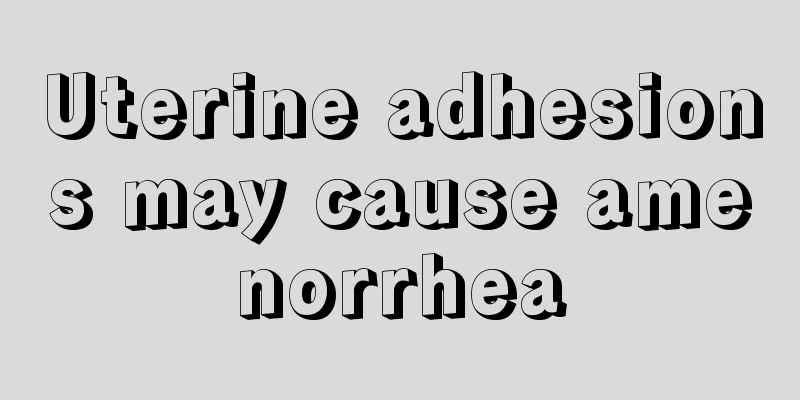Is steaming good for pelvic inflammatory disease?

|
In our lives, many people like sweat steaming, especially after taking a shower. Sweat steaming can open the pores of the whole body. It is very comfortable after sweat steaming. Sweat steaming can also treat many diseases, effectively discharge moisture from the human body, and even kill some bacteria in the body with high temperature. So is sweat steaming good for women with pelvic inflammatory disease? Here is an introduction to it. Can pelvic inflammatory disease be treated by sweat steaming? Pelvic inflammatory disease can be treated with sweat steaming, but sweat steaming cannot cure pelvic inflammatory disease. Pelvic inflammatory disease is an inflammatory disease of the female reproductive system and an inflammation of the female body. Although sweat steaming can promote sweating to expel toxins from the body and play a role in health care, it can only be effective for superficial diseases of the body and has no effect on deep diseases of the body. Therefore, sweat steaming has neither benefits nor disadvantages for pelvic inflammatory disease. The pathogens of pelvic inflammatory disease have two sources, exogenous and endogenous. The two pathogens can exist alone, but usually there is a mixed infection. Exogenous chlamydia or gonorrhea Neisseria infection may cause fallopian tube damage, which may easily lead to endogenous aerobic and anaerobic infection. 1. Endogenous pathogens The microorganisms that originally reside in the vagina include aerobic and anaerobic bacteria. It may be an infection of only aerobic bacteria or only anaerobic bacteria, but mixed infection of aerobic and anaerobic bacteria is more common. The main aerobic and facultative anaerobic bacteria are Staphylococcus aureus, hemolytic Streptococcus, and Escherichia coli; the anaerobic bacteria are Bacteroides fragilis, Peptococcus, and Peptostreptococcus. The characteristics of anaerobic bacterial infection are easy formation of pelvic abscess, infectious thrombophlebitis, and pus with fecal odor and bubbles. 2. Exogenous pathogens The main pathogens are sexually transmitted diseases, such as Chlamydia trachomatis and Neisseria gonorrhoeae. Others include mycoplasmas, including Mycoplasma hominis, Mycoplasma genitalium, and Ureaplasma urealyticum. Treatment of pelvic inflammatory disease 1. General treatment During the acute phase, patients should rest in bed in a semi-recumbent position, which is conducive to the accumulation of pus in the rectouterine pouch and localize the inflammation. Patients should be given adequate nutrition and water and electrolyte imbalance should be corrected. 2. Drug treatment Medication principles: Select appropriate antibiotics based on drug sensitivity; combined medication should be sufficient in doses and thorough in treatment; if the infection is severe, use adrenal cortex hormones at the same time. Antibiotic treatment: For mild cases, penicillin can be given intravenously or intramuscularly. For severe cases, broad-spectrum antibiotics can be given by intravenous drip, and metronidazole can be added. 3. Surgical treatment The method and scope of surgery mainly depend on the patient's age and whether or not he or she wants to have children. Local abscess resection and drainage, or total hysterectomy plus bilateral adnexectomy and drainage are used, but the latter is more effective. During the operation, the abscess is removed as much as possible, or the pus is cleared, and the pelvic cavity is washed with antibiotic dilution to prevent the spread of inflammation. 4. Physical therapy It can promote local blood circulation, improve tissue nutritional status, enhance metabolism, and facilitate the dissipation of inflammation. Commonly used methods include short wave, ultrashort wave, ultrasound, audio, laser, microwave, ion penetration, etc. Mainly used for chronic pelvic inflammatory disease. 5. Other treatments Posterior culdotomy and drainage; lateral fornix closure; intrauterine antibiotic injection. |
<<: Can I do a vaginal ultrasound on the second day of my period?
>>: Can pregnant women have dental treatment?
Recommend
Is it good for women to have sex during menstruation?
Everyone should know that women have a physiologi...
What to do if women have vaginal diseases
We know that once a woman's vagina becomes in...
Bladder training for women
Bladder and eye muscle weakness is a chronic dise...
Can I eat lotus leaves during menstruation?
All healthy women will experience the menstrual p...
When the weather gets cold, I always want to eat...How can I eat to better cope with the cold winter?
In cold weather, in addition to wearing more clot...
Can women lose weight by drinking milk at night?
Every woman wants to have a devilish body, or be ...
If you have regular physical examinations, do you know to check this indicator?
If you have regular physical examinations, do you...
Do women still have sexual desires after menopause?
There are still physiological needs after menopau...
The “knowns” and “unknowns” about asymptomatic infections
"Asymptomatic infections" have become a...
If you want to reduce adverse reactions when taking aspirin for a long time, what should you do?
Aspirin is the most classic antiplatelet drug, wh...
Can pregnant women take Daknin in 6 months?
During pregnancy, pregnant mothers need to pay at...
Standard size of gestational sac after 28 days of transplantation
In some infertility cases, conventional treatment...
Popular Science Book "Eat Less Oil, Eat Better Oil" (Wang Xingguo) Article Selection 13
3 The role of fats in cooking Oil plays a very im...
Reasons for prolonged absence of menstruation
Irregular menstruation is normal for adolescent g...
[Medical Q&A] Is shoulder pain in the elderly the same as frozen shoulder?
Planner: Chinese Medical Association Reviewer: Ha...









